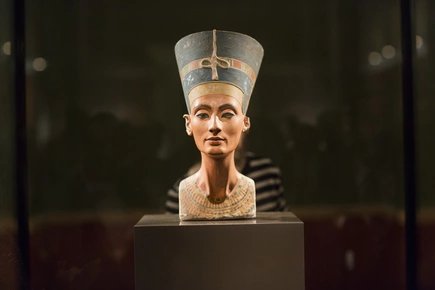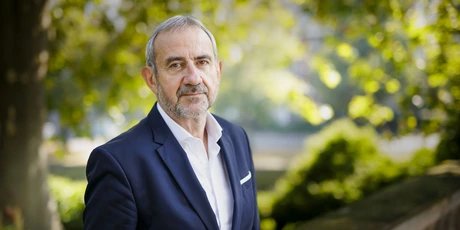
Hermann Parzinger, Former President of the Stiftung Preussischer Kulturbesitz
My favourite piece of the collections
The large silver vase from the "Treasure of Priam"
The large silver handled vessel from the "Treasure of Priam" is not spectacular, it is certainly overlooked by most visitors to the Museum Island, and yet it stands for incredibly fascinating stories.
The piece is now in the Schliemann Hall of the Neues Museum. Other finds from Schliemann's excavations in Troy can also be admired there. The gold objects from the famous "Treasure of Priam" that were taken to the Soviet Union at the end of the war were discovered by Schliemann in this very large silver vase.

Everything about this discovery is fascinating
Heinrich Schliemann, the self-made man and autodidact, became a co-founder of modern excavation archaeology in Troy. He found this treasure of gold and silver in a niche in the wall and attributed it to the fabled King Priam, but was mistaken by 1,000 years, as we know today: In archaeology, however, the obvious is not always the right thing.
A treasure on an adventurous journey
Schliemann brings gold and silver pieces from Turkey without authorisation, is sentenced for it there, voluntarily pays more than double the fine and is allowed to continue digging in Troy. The Hermitage in St Petersburg does not want the treasure, Schliemann initially exhibits it in London and not in Berlin because he was offended by criticism from German archaeologists. He eventually donated it to the Berlin Museums, and Kaiser Wilhelm II himself ordered its presentation from 1882 in the Martin-Gropius-Bau.
Before the end of the war, it was stored in the flak tower at the Tiergarten for its protection, where the Soviet army found it in 1945 and flew it to Moscow. There, his trail was lost for decades until the Pushkin Museum admitted to owning him in 1994. Since then, Germany has been unsuccessfully endeavouring to return it to Berlin.
It is precisely these incredibly exciting stories that so many of the objects in the buildings on Museum Island tell
In their complexity, they combine catastrophes from thousands of years ago with those of the present day. And it's not always the highlights that offer the greatest stories. This is exactly what makes the Museum Island so special.
Prof. Dr. Hermann Parzinger
